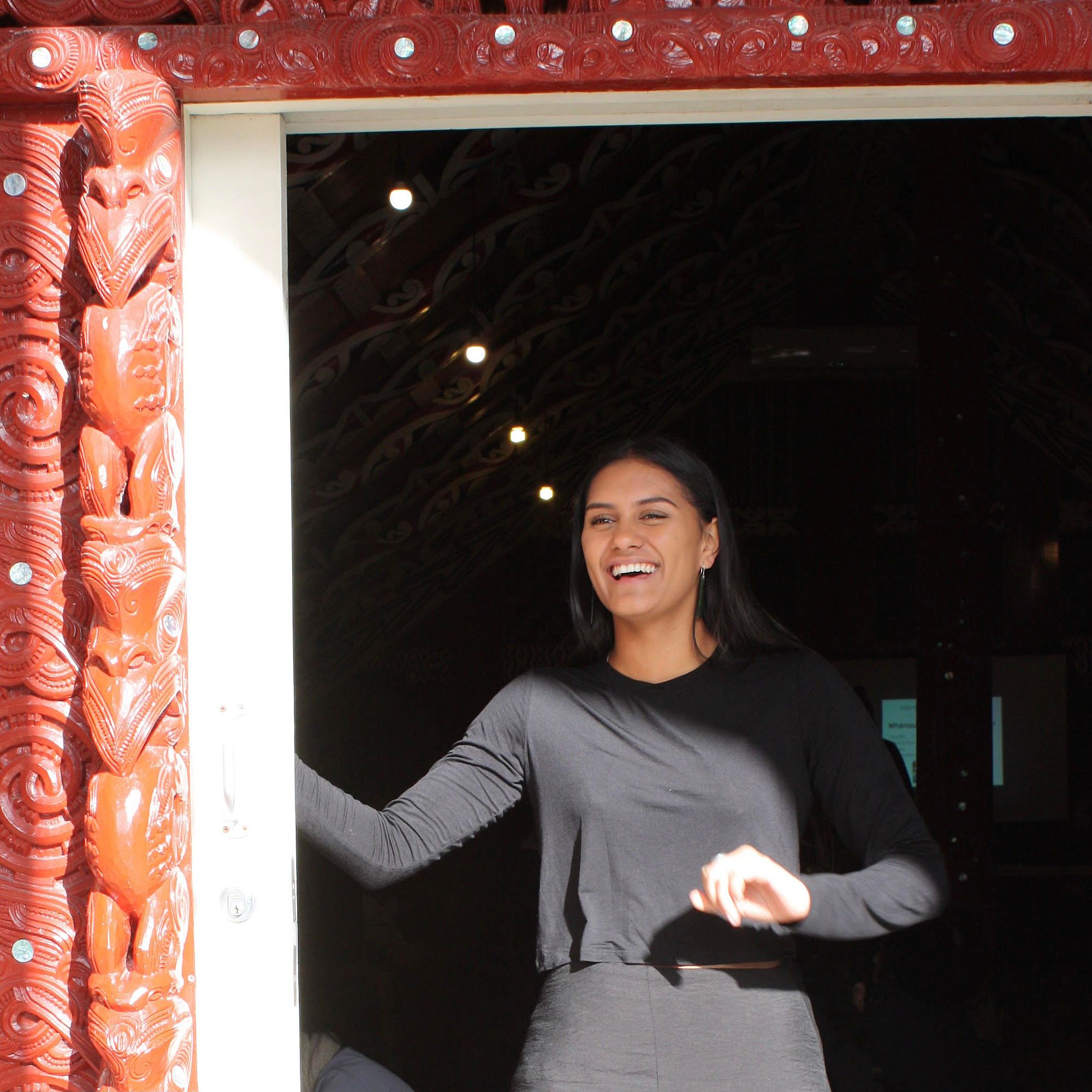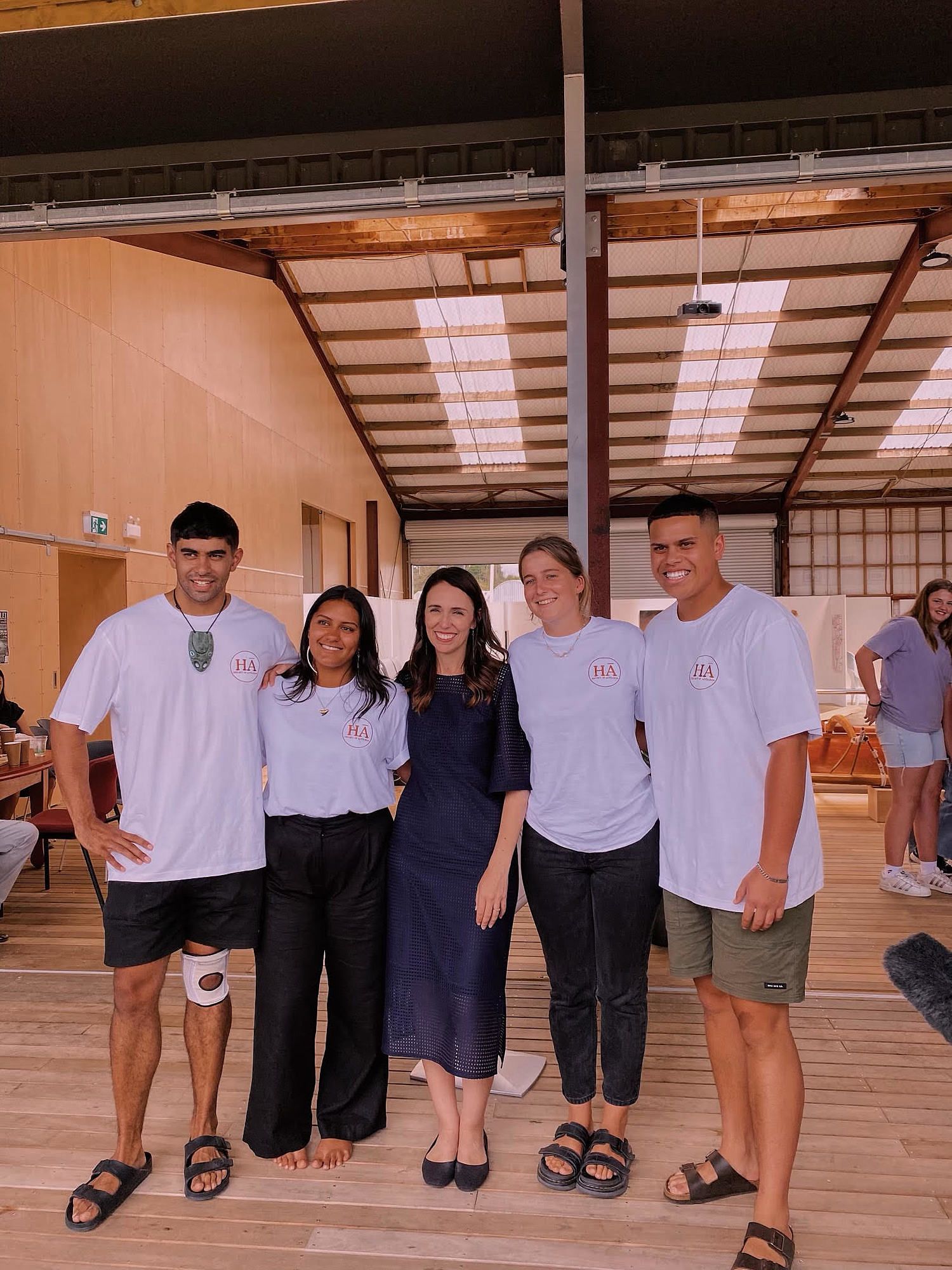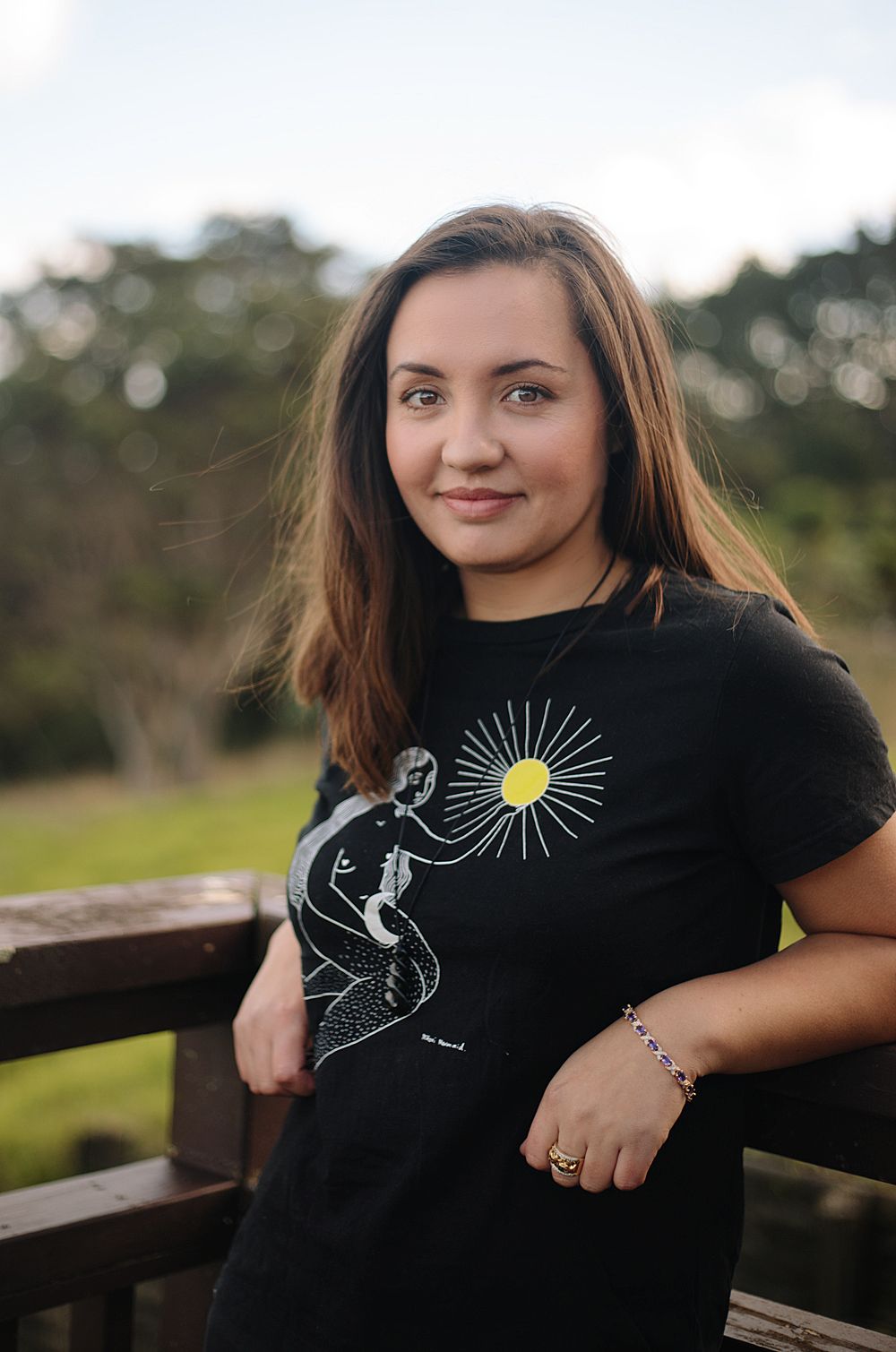Off the Beaten Track with Justice Hetaraka
Editor Ataria Sharman speaks with rangatahi Māori Justice Hetaraka on why it's important tamariki learn our history.
In this series, our editor at The Pantograph Punch ventures into the regions of Aotearoa to kōrero with some exciting creatives. Whangārei-based organisation HĀ develops education programmes that teach the history of Aotearoa through the use of art. It is a rangatahi-led collaboration founded on Māori values.
The day before Waitangi Day this year, co-founders Justice Hetaraka, Rhieve Grey, Rhoen Hemara and Kate McLeod presented to Jacinda Ardern and various other ministers their proposal on a partnership with the government to develop and deliver their programmes. To find out what they’ve been up to since then, Ataria met with Justice (Ngāti Wai) at local café Sabio, masks and all, to kōrero.
*
Ataria Sharman: Tell me a bit about yourself, Justice.
Justice Hetaraka: I was raised in Whangārei. I went to Hora Hora Primary School and we lived in the hood, though we never viewed it as that. My whānau were super strong, children and education always came first.
I’ve always lived with my whānau around, my grandparents, mum, aunties and uncles. Always in each other's lives. Only more recently I’ve realised how different this is to a lot of people. I was raised by my papa and tāua. When I was 12 years old I told my mum I was going to leave home and move to my grandparents’. I even gave them a contract, with a list of things like ‘I’ll make you cuppa teas’, so they would accept my proposal. I was always at their place anyways, and I’m still there now at 22. This has solidified my identity. Looking back, having them raise me has been huge. Hanging out with old people is cool, and they’ve taught me so much about mātauranga Māori, morals and values.
I went to Whangārei Girls’ High School. My experience there was fine, because I was a ‘good’ Māori, meaning I did all the things I was ‘supposed’ to do. But a lot of my friends dropped out in Year 13 because they didn’t like it; they thought school wasn’t for them, but, really, the education system failed them.
As Head Girl in my final year, one of the things that me and the other six Māori students in that year did was write a karakia for the school. It wasn’t a religious karakia, more an affirmation, and we taught it at house meetings, but there was some resistance from the teachers. We had students telling us that the teachers wouldn't do the karakia in class.
One of the learnings from bringing that karakia to the school was the realisation that Māori culture enriches everyone. There were big shifts and I am grateful to the school for taking our feedback on board. The whole school knows our karakia now. I’ve been back to the school for prizegivings and assemblies, and it’s unreal hearing all the students say it. This showed me that we do have the power to move people and make change. I’m just sad that the Māori students who’d already left the school because it didn’t work for them missed the chance to be a part of it.
One of the learnings was the realisation that Māori culture enriches everyone
AS: When you think about what your tāua and papa taught you – what sticks out the most?
JH: Aroha.I’ve always known and felt their aroha. They’re so selfless and humble, that’s how they always operate. Living from a place of aroha is super precious in this world.
When I think about New Zealand’s legal system I think that’s what is missing. There’re no morals and values behind our law-making. No underlying foundational principles, a kawa, to how we make law.
AS: What did you study at university?
JH: I was going to do fine arts at The University of Auckland. Photography was my passion, I did it all through high school, alongside art history and classical studies. I thought I’d enjoy telling our stories through art. But then a friend of mine came back to Whangārei after completing a general law paper and told me that I had to study law. I wasn’t sure about it, I wasn’t that great at English, I didn’t read much or go to the library, and you didn’t see many Māori in those spaces either. Studying law was an option that had never crossed my mind, but a couple months before the semester started, I changed my degree from fine arts to law.
When I moved down to Tāmaki Makaurau, I couldn’t stand the university hall I was in. I came in late because I had been at Te Matatini and everyone had already made friends. I just found the culture weird. I didn’t connect with anyone and I don’t think I spent one weekend there, I’d come back to Whangārei. Everyone was on the piss, and I’ve never been into that, I just didn’t relate, so I decided to come home and study. The lectures are all online now, I watch the recordings.
I mean we can talk about it all day but when are we going to actually do something?
AS: Where did the kākano for HĀ come from?
JH: There were some fateful circumstances that led to HĀ. Although I didn’t like staying in Auckland, I did meet some really cool people at university. In 2019, in my third year of university, I was in a mentorship programme and met a student called Rhieve Grey at a flash university alumni event. We really clicked, our whakaaro was super aligned.
At that time, I was just coming out of my shell in my studies, and starting to shape and formulate ideas in my head as to how things could be better. I realised it was odd how we don’t learn about our history here in Aotearoa. The education system was preventing us from knowing and learning these beautiful gems. Then on social media and stuff, I was seeing a lot of yarning about it, but no one seemed to be doing anything. I mean we can talk about it all day but when are we going to actually do something?
The idea for HĀ first came to my mind after a trip to Ruapekapeka (the site of a war between Ngāpuhi and the British) with whānau to learn more about what happened there. The idea was to create some kind of workshop to educate on the history of Aotearoa, something that could sit outside of the school curriculum. And I was just about to reach out to Rhieve to tell him about it when he messaged me, “Oh bro can we catch up?” So we organised a meet-up at university, and it turned out that we’d both come to tell each other the same thing!
The idea for HĀ came to me after a trip to Ruapekapeka (the site of a war between Ngāpuhi and the British)
We organised a hui with one of the Māori studies lecturers at the university to see what he thought of the idea. While we were talking to him, a guy called Rhoen Hemara accidentally walked into the room. He’s actually from up here [Te Tai Tokerau] but I had never met him before. Rhoen and I met properly at the rally for Mauna Kea and then I gave him a lift to Ihumātao the next day, where we stood on the front line together. Rhoen had this super-creative and amazing energy. I just knew he’d make such a great facilitator. So Rhieve and I brought him on board as well.
Then there’s Kate McLeod, local artist and photographer Diane Stoppard’s daughter. I was introduced to Kate through her mum, and Kate was also studying in Auckland at the time so we had a coffee. The first time I met her, and three hours into our coffee date, I knew she would be perfect for this mahi so I shared the idea with her. We’ve got a balanced team around this kaupapa – Rhieve, Rhoen, Kate and myself – and everyone’s so passionate.
In 2019, we ran our Kākano programme for Year 10s with Whangārei Girls’ High. We started at Girls’ High because I had maintained good connections there and they trusted me with the students. It was really successful and we learnt a lot, like how important it is to build relationships with the community and the schools. Community should always be at the centre.
When we’re developing our content we’re always thinking, are we doing this with aroha, is this safe?
AS: When you’re building a programme like this, what’s most important?
JH: Education is key, because then you can overcome ignorance. For us,it’s most important to learn history in a safe way and with aroha. When we’re developing our content we’re always thinking, are we doing this with aroha, is this safe? Because we’ve got kids from different backgrounds, different religions and ideologies. We’re guided in this space by kaumatua, our communities, trusted academics and the students. It has to be built by the community, for the community.
We’re flipping mainstream teaching culture on its head. This year we organised an exhibition fundraiser and, due to some fortuitous timing around Waitangi Day, the Prime Minister and other ministers were able to attend. All four of us, Rhieve, Rhoen, Kate and myself, spoke to them and it was a real mic-drop moment. We told the ministers that they need to be focusing on teachers, who need to learn history and in a safe way, because otherwise it creates hostile learning environments for our tamariki. That’s why we’re now developing a programme for teachers. We see an opportunity for the government to enter a genuine partnership with us in this space. Mātauranga Māori, hītori and our mokopuna are taonga, and, as Māori, we need to have sovereignty over how we protect these taonga. We believe that the government’s role is to ensure that we can protect these taonga in the way we determine is appropriate. In other words, the government should resource us to protect our taonga under tikanga. What a beautiful way to honour Te Tiriti!
Kids in mainstream schools today are not inspired and they’re not being heard. They’re dealing with a lot. The latest IPCC report was released around the time of one of our workshops. We talked to the kids about it and, unsurprisingly, they were really upset that, because of climate change, they couldn’t even envision that there would be a future for them on this planet. We try to teach them that we can change that future, we can create a different future.
At HĀ we’re envisioning the future. Here’s our history now: where do we want to go next?
*
AS: Can you share some of your most special a-HĀ moments?
JH: My favourite kids are the ones who’ve been done dirty by the system. I know they’ve got potential but haven’t been given a chance, they’ve been beat down by their teachers. I love connecting with these students at their level and hearing them say at the end of a workshop how proud they are of what they’ve done.
When they say to me, “Justice come look, come look [at their work]!” That’s it for me. A real highlight.
At one school, I noticed there was a group of boys that were always getting picked on by the teachers. I could tell that they needed some inspiration and autonomy over their work. So when we arrived at Hīhīaua Cultural Centre on creation day, I thought about what I could give them that would empower them to join in. I found an old hue in the workshop shed. A hue is tactile and hands-on, so I took it to them and asked them to get the seeds out. There’s a lot of seeds in a hue and the boys spent ten minutes shaking it and banging out all the seeds. Then they sanded it until it was smooth to touch and showed it to me – they were so proud of themselves.
One of the boys had a paintbrush ready to start painting, so I asked if he wanted to sketch the design first, but he said, “Justice, I didn’t come here clueless.” His confidence happily shut me up, and I let them get into it. After a while, I noticed they were sitting around again, so I went over and they told me, “We’re just waiting for the paint to dry”, and sure enough, their painted hue was in a glass jar upside down and drying. Then after seeing another professionally crafted hue in the gallery, hanging in a basket and selling for over $1000, they decided to make a hanging basket for their hue, too. They were so proud of their mahi and were stoked that they worked together so well.
It’s important to have fun – learning our history is heavy stuff. But when they have fun and get to express their emotions, they get it. They get it, these kids, they're smart.
I want a world where everyone has the opportunity to express their brilliance, their genius, their humanity
AS: What advice do you have for arts organisations who want to better engage with rangatahi?
JH: I am a youth funds assessor for Creative New Zealand, and a few years ago they asked some of us to present at their annual conference, Nui Te Kōrero. Our kaupapa was engaging with rangatahi. At the beginning of the workshop we went around and introduced ourselves, told them who we were and what we did. Then we went through an activity, where we described specific characters that were young people, i.e., what they did in school, what their interests were, etc., and then challenged the arts representatives to come up with a plan on how to engage with those characters – how to get that young person into their gallery.
We let them come up with some ideas, and then we revealed the purpose of the exercise. Those characters were actually based on our own stories, the ones we’d shared at the beginning of the workshop. The whole point was that all they’d needed to do was actually listen to us, and then they would’ve known how to engage. We’d already told them the answers, they needed to listen rather than just making assumptions of what young people would be interested in.
AS: What’s your why?
JH: It’s a bit cheesy, butjustice for my tūpuna and my mokopuna. I do it for them. I’m a bridge between the past and future. I want a world where everyone has the opportunity to express their brilliance, their genius, their humanity. But it feels like right now we’re in the repair shop, we’re still trying to get our shit together.
That’s what HĀ is about. We’re on a journey to empower our tamariki and communities to understand what our people have been through, to create a better future for our mokopuna.



